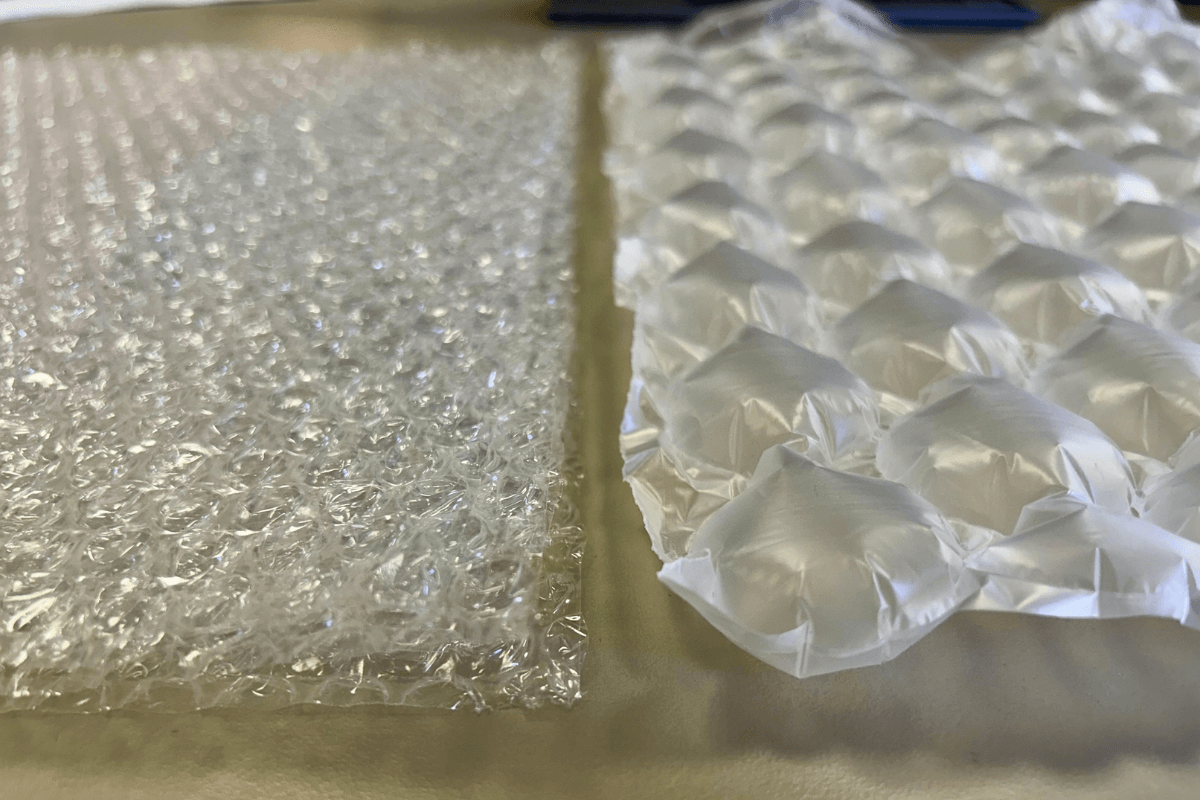
Air cushion packaging vs Traditional bubble wrap: Our experiment
For many years, bubble wrap was the most popular choice for packaging shipments, as it was considered the cheap packaging film. However, in recent years more and more companies have started switching to air cushion packaging, which offers both better protection and lower costs.
To find out which solution is more effective in practice, our team at Pakful carried out an experiment, comparing bubble wrap with air cushions across three criteria: material consumption, cost, and sustainability.
1. Packaging film consumption
The first factor we tested was material usage. It quickly became clear that to achieve the same protective effect as a single layer of air cushion film, at least five layers of traditional bubble wrap were needed.
This means bubble wrap is consumed much faster, and the packing process itself becomes more time-consuming.
By contrast, air cushions provide sufficient protection with just one layer, helping businesses reduce both material consumption and overall packing costs.

2. Is bubble wrap really that cheap?
To keep the comparison fair, we calculated costs using a common metric – price per square metre:
◼️ Bubble wrap: €0.19/m²
◼️ Air cushion film: €0.16/m²
At first glance, the difference is small – just a few cents. This creates the impression that bubble wrap is the “cheap packaging film”. But in reality, the picture is very different.
Real costs
To achieve the same protection as with a single layer of air cushion film, bubble wrap requires at least five layers. This increases the actual packaging cost per shipment by a factor of five:
5 × €0.19 = €0.95/m²
It’s important to note that this calculation was made using the cheapest bubble wrap option available – a roll 1.2 m wide and 100 m long. Other options we had access to were even more expensive, meaning real costs can be higher.
Packing speed
Another key factor is packing time per shipment. With bubble wrap, items must be wrapped in multiple layers and secured with tape, which makes the process slow and inconvenient. With air cushions, it’s enough to simply place them in the box to safely fix the product in place.
An extra advantage is that air cushion film is perforated into sections, so it doesn’t need to be cut with scissors. You can quickly tear off just the amount you need and use it immediately to fill empty space in the box. This eliminates the need for additional packing steps or extra filler materials.
As a result, packing with air cushions can be up to twice as fast, which not only lowers labour costs but also increases warehouse throughput. And since the overall packaging weight is reduced, transport costs are lower as well.
When combining the convenience, time savings, and logistical benefits, it’s clear that air cushion packaging outperforms bubble wrap in practice.
3. Sustainable packaging
Sustainability is determined not only by cost, but also by the actual amount of material consumed. Our test showed a clear contrast: to fill the same volume, bubble wrap weighs 16 g, while air cushions require just 2 g.
This means air cushions use more than eight times less plastic, reducing both total waste and transportation costs.


There’s also a difference in the raw materials used. Air cushions are made from HDPE, a fully recyclable plastic that is increasingly produced with recycled content. Bubble wrap is mostly made from LDPE, which in theory is recyclable too, but in practice is much harder to collect and process – meaning much of it ends up as waste.
By combining lighter weight, more efficient logistics, and the use of recyclable plastic, it’s clear that air cushion packaging is far more sustainable than bubble wrap.
Conclusion
Our experiment clearly shows that air cushion packaging is more efficient, cost-effective, and sustainable than traditional bubble wrap. It helps reduce packaging material consumption, labour time, and transport weight – all while being better for the environment.
Email: veikals@pakful.lv
Phone: +371 26660018
